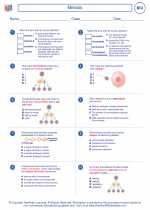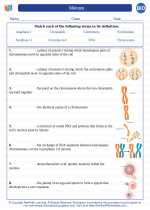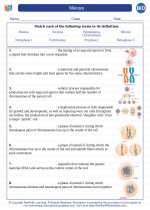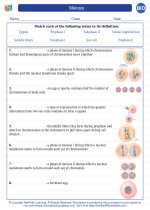Cytoskeleton
The cytoskeleton is a dynamic network of protein filaments that provides structural support to the cell, facilitates cellular movement, and plays a crucial role in cell division and intracellular transport. It is composed of three main types of protein filaments: microtubules, actin filaments (also known as microfilaments), and intermediate filaments.
Microtubules
Microtubules are hollow cylindrical structures made up of tubulin protein subunits. They are involved in maintaining cell shape, intracellular transport, and forming the mitotic spindle during cell division. They also serve as tracks for the movement of organelles and vesicles within the cell.
Actin Filaments
Actin filaments are thin, flexible protein filaments made up of actin monomers. They are involved in cell movement, muscle contraction, and maintaining cell shape. Actin filaments also play a role in cell division and are important for the formation of cellular protrusions such as microvilli and filopodia.
Intermediate Filaments
Intermediate filaments are fibrous proteins that provide mechanical support to the cell and help anchor organelles in place. They are more stable than microtubules and actin filaments, and are important for maintaining the structural integrity of the cell.
Functions of the Cytoskeleton
- Structural Support: The cytoskeleton provides mechanical support to the cell and helps maintain its shape.
- Cellular Movement: The cytoskeleton is involved in various forms of cellular movement, including cell motility, muscle contraction, and the movement of organelles within the cell.
- Cell Division: The cytoskeleton plays a crucial role in cell division by forming the mitotic spindle and ensuring the proper segregation of chromosomes.
- Intracellular Transport: It serves as tracks for the movement of organelles and vesicles within the cell, facilitating the transport of materials from one part of the cell to another.
Study Guide
To study the cytoskeleton effectively, consider the following key points:- Understand the structure and composition of microtubules, actin filaments, and intermediate filaments.
- Learn the functions of the cytoskeleton in providing structural support, facilitating cellular movement, and its role in cell division and intracellular transport.
- Explore the various proteins and motor proteins associated with the cytoskeleton and their roles in cellular processes.
- Study the dynamic nature of the cytoskeleton and its regulation by various signaling pathways and cellular processes.
- Explore the implications of cytoskeletal defects and dysfunction in human health and disease.
[Cytoskeleton] Related Worksheets and Study Guides:
.◂Biology Worksheets and Study Guides High School. Meiosis

 Worksheet/Answer key
Worksheet/Answer key
 Worksheet/Answer key
Worksheet/Answer key
 Vocabulary/Answer key
Vocabulary/Answer key
 Vocabulary/Answer key
Vocabulary/Answer key
 Vocabulary/Answer key
Vocabulary/Answer key
